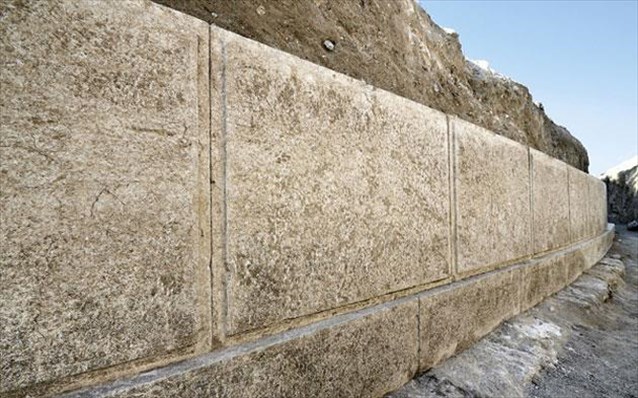Over the past few days the region around the excavations of the tomb in Amphipolis has become the subject of increased interest on the part of tourists who had chosen North Greece for their summer holiday. They arrived at the fenced and heavily guarded site by bus and car, trying to see the entrance with the two sphinxes that the archaeological team has discovered.
Although the work was interrupted during the three days from 15-18 August the tourist inflow to the region of the gulf of the River Strouma was continuous, as reported by local sources.
Hundreds of tourists visited the museum in Amphipolis to see the ancient artefacts exhibited there. Some of them came equipped with special telescopic lenses to capture the details of the covered tomb entrance.
The excavations were resumed on Monday morning and the composition of the team was expanded with the addition of several archaeologists in order for the mystery hidden by the tomb to be revealed as soon as possible. Archaeologist Michalis Lefantzis, a close collaborator of head of the excavations Catherine Peristeri, is at the site as well.

"Whatever happens, you will learn about it very soon," he told the Greek news agency AMNA, adding that the information on the course of the archaeological excavations will only be provided by the Ministry of Culture.
The tomb of unique size and its so far secret occupant have provoked huge media interest. Television stations both from West European and from Greece’s neighbouring countries have sent crews to the site as well. According to mayor of the local municipality Athanasios Zournatzis "the region was visited by a TV crew from Bulgaria and many tourist groups arriving by bus."
It is already clear that both the sphinxes and marble slabs at the entrance of the tomb will be removed to facilitate the access of archaeologists to its interior.
According to them, behind the wall of the entrance, the floor is tessellated with diamond-shaped pieces and it probably goes behind the door and its poles. The geophysical survey that was conducted last year showed that the interior of the tomb is divided into three rooms. When the soil in this part is removed, which may take place along with the excavations, archaeologists will dismantle part of the wall that was built after the deceased person was laid in the grave in order to protect the building. The dismantling will take place stone by stone, and each piece will be described, numbered and documented. If there is no second building behind the first wall archaeologists may find themselves in front of the grave that will be opened as described.
They do not exclude the possibility of demolition in some of the three inside rooms. In this case, the soil will be carefully collected and transported because it could contain valuable finds.
If this worst-case scenario is not confirmed and the three rooms are empty, archaeologists will take pictures of them and will establish whether the tomb has remained intact over the centuries or if it has been already opened. If the latter proves to be true then the probability of it being deprived of important elements is great. In this case, archaeologists will have to base their assumptions on any things that they may find. However, if the grave was not the target of attacks in the past, the identification of the deceased person(s) will be easier, based on the skeleton, sex, age, height, and the burial gifts around him or her, or them.
Despite the increased speculation that the body of Alexander the Great could have been laid in the tomb, the head of the excavations continues to believe that a senior general of his army was buried there. So far, however, there is insufficient data to exactly determine his identity.